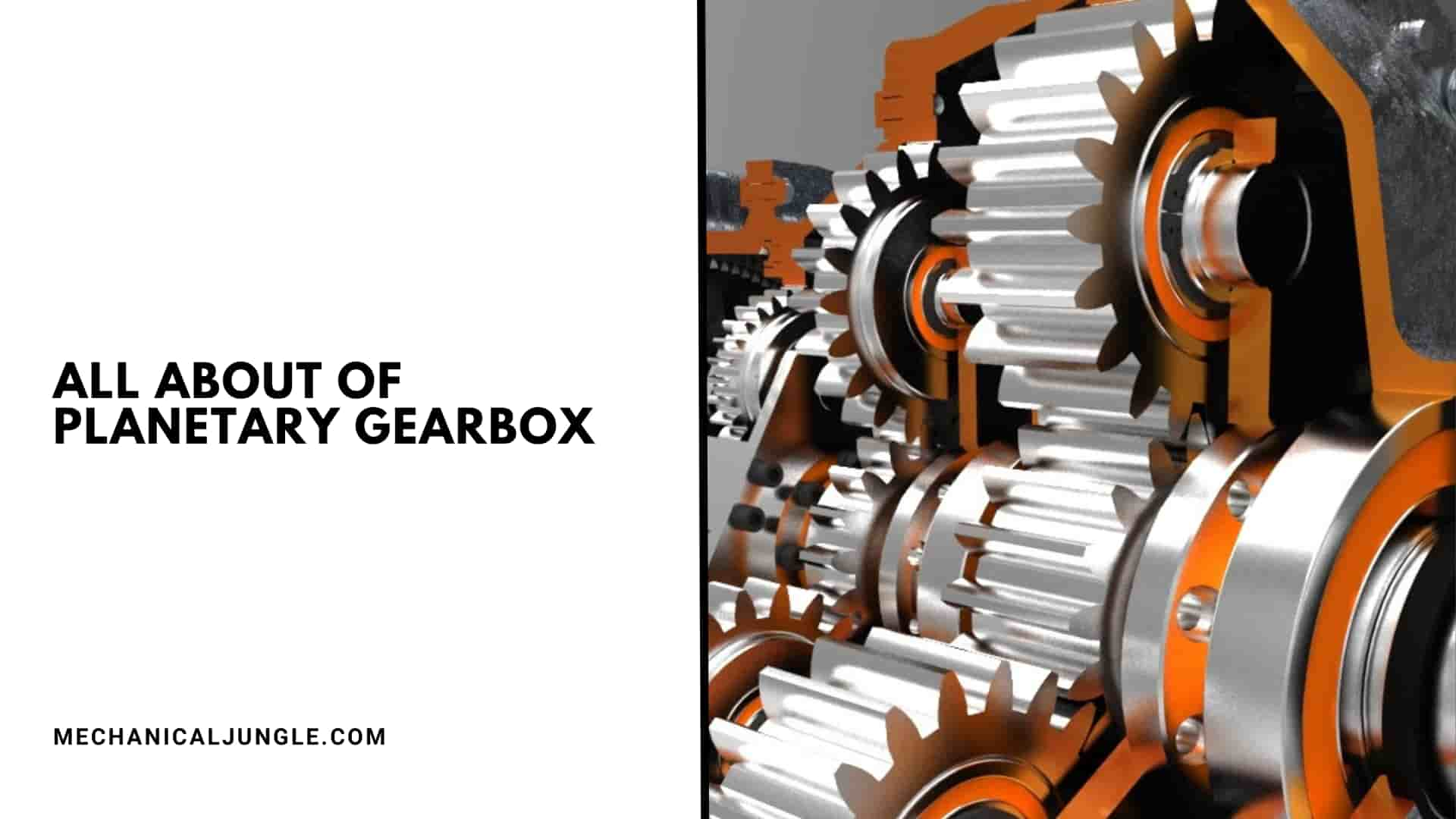
What Is a Planetary Gearbox?
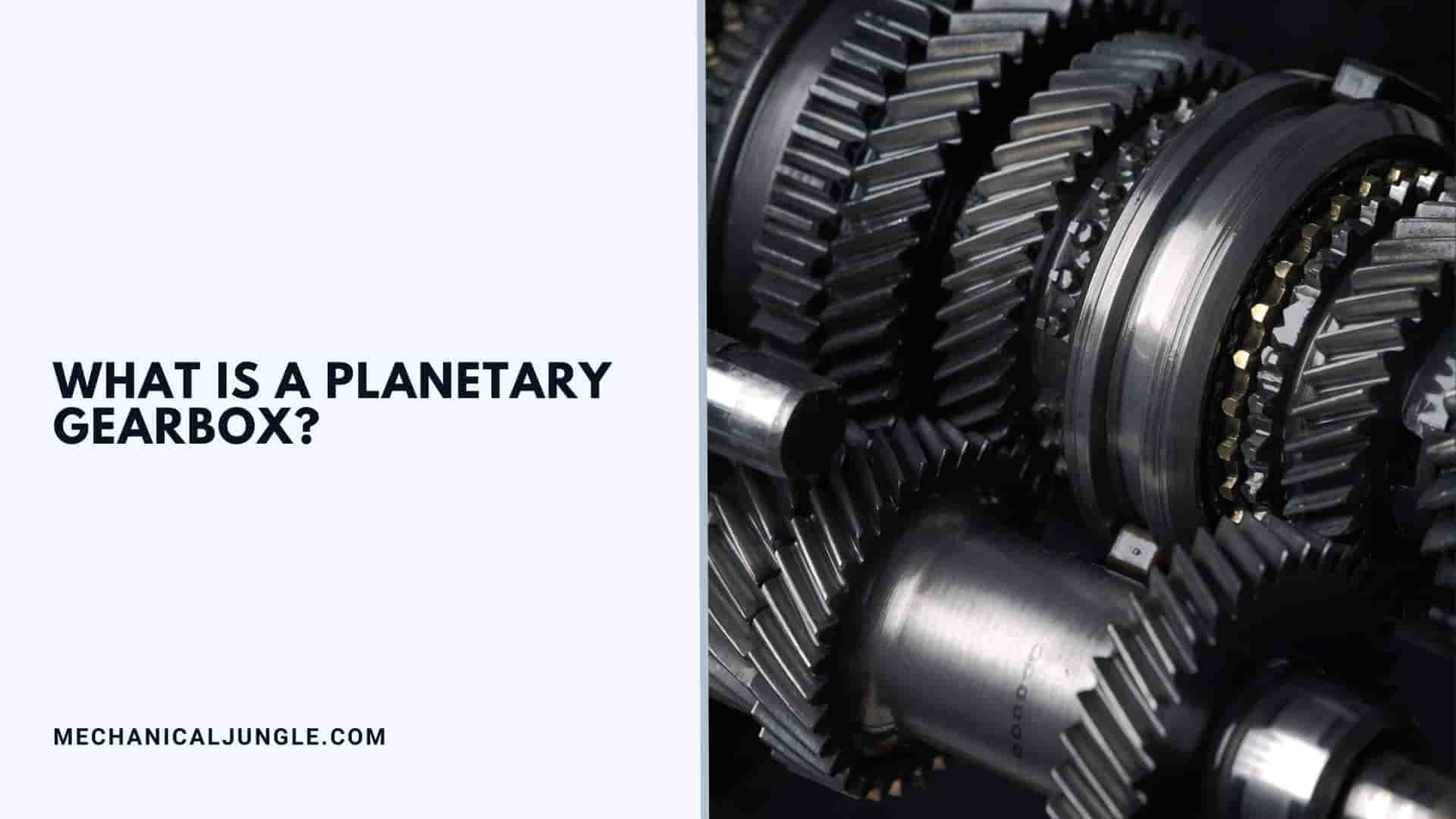
Which millennium-old tech basics are some of the most innovative technological breakthroughs of the moment? Robotics, 3D printing, and new modes of transportation have one thing in common: often, they are driven by a planetary gearbox.
As suppliers of planetary gearboxes, of course, we know all the ins and outs, but what if you encounter this technology for the first time? We have decided to explain it clearly for everyone – in this article, we discuss the basics of planetary gearboxes.
Planetary gearboxes are a gearbox with the input shaft and output shaft aligned. Planetary gearboxes are used to transfer the greatest torque in the most compact form known as torque density.
The acceleration hub of a bicycle is a great example of a planetary-wheel mechanism: have you ever wondered how you can get so much power & efficiency in such a small hub? For three-speed hubs, a one-stage planetary gear system is used; for five-speed hubs, a 2-stage.
Each planetary gear system has a reduction position, direct coupling, and acceleration mode. In mathematical terms, the smallest reduction ratio is 3:1; the largest is 10:1. At a ratio of less than 3, the sun gears become much larger than the planet gear.
At a ratio greater than ten, the sun wheel becomes too small, and the torque will drop. Ratios are usually absolute, i.e., integer numbers. Who invented the planetary gearbox is not known, but it was functionally described by Leonardo da Vinci in 1490 & has been used for centuries.
Why Is It Named a Planetary Gearbox?
Planetary gearboxes got their name because of how the different gears move together. In planetary gearboxes, we see sun gear gears, satellite ring gears, and two or more planetary gears.
Normally, the sun-gear operates and thus moves the planetary gear locked in the planet carrier and forms the output shaft. Satellite gear has a fixed position with respect to the outside world.
It looks very similar to our planet’s Solar System, and that’s where the name comes from. What helped is that ancient gear constructions were widely used in astrology for mapping & following our celestial bodies. So it was not such a bigs step.
In practice, we often speak from the point of view of the use of planetary gearboxes for industrial automation. That’s why we call sun gear the input shaft, planet gears and carrier as the output shaft, and satellite gear or ring gear as housing.
Possibilities of Planetary Gearboxes:
It is possible to realize different speeds & to turn directions with the same construction. This can be achieved, for example, by reversing the gearbox, which offers the following possibilities:
| Sr.No. | Driven sides | Solid world | To be driven sides | Results |
| 1 | Input shafts | Housing | Output shaft | Reduction |
| 2 | Input shafts | Output shaft | Housing | Reverse movement + Delay |
| 3 | Output shafts | Input shaft | Housing | Delay |
| 4 | Output shafts | Housing | Input shafts | Acceleration |
| 5 | Housing | Output shaft | Input shafts | Reverse movement + Acceleration |
| 6 | Housing | Input shaft | Output shafts | Delay |
| 7 | In- and output shaft | N.A. | Housing | 1:01 |
How Does a Planetary Gearbox Work?

Planetary gearboxes, also known as an epicyclic gearbox, is one of the most interesting types of gearbox available within speed control. They are often used in automotive as an important part of automatic transmissions.
A planetary gearbox is a type of gearbox where both the input and output have the same center of rotation. This means that the centers of the input gear rotate around the center of the output gear, and the input & output shafts are aligned.
The one-of-a-kind gearbox meets all modeling concepts of servo applications, offering a comparatively longer performance life with fewer maintenance needs once – Planetary Gearbox.
This is because planetary gearboxes provide great torque transmission with suitable stiffness and low noise in a footprint that is more compact than other device forms.
The arrangement of gears can be compared to our Milky Way, where the planets revolve around the Sun, hence the name “planetary gearbox.” As discussed earlier, there is a “sun” gear in the middle of the planetary gearbox – also offered as the central gear. It is always the input part.
Around the outsides, there are two or more “planetary” components – or external gears. Around the planetary parts, there is a ring component that connects the formation. The planetary gears are connected to a carrier which in turn is connected to the output shaft.
The design of a planetary gearbox is relatively simple, consisting of a central sun gear, an outer ring also known as an inner gear because its teeth are turned inward, a carrier, and a planetary gear. The spinning occurs as a result of input power to the sun gear.
The planetary gear mesh with the sun gear has a standard, and as the sun gear rotates at its base, the planetary gears rotate according to their own axes. The planetary gear is also proportional to the part of the ring, which is stationary, allowing the planetary parts to move around the sun gear.
The carriers keep planetary gears in their original form and set their gaps. It rotates with the planetary parts and incorporates the output shaft. In the middle of the planetary gearboxes, there is a “sun” gear – also known as the central gear.
This is often the input gear. Around the outsides, there are two or more “planetary” gears – or outer gears. There are rings of gears around the planetary gear that holds the formation together. The planetary gear is connected by a carrier which in turn is connected to the output shaft.
Selecting a Planetary Gearbox:
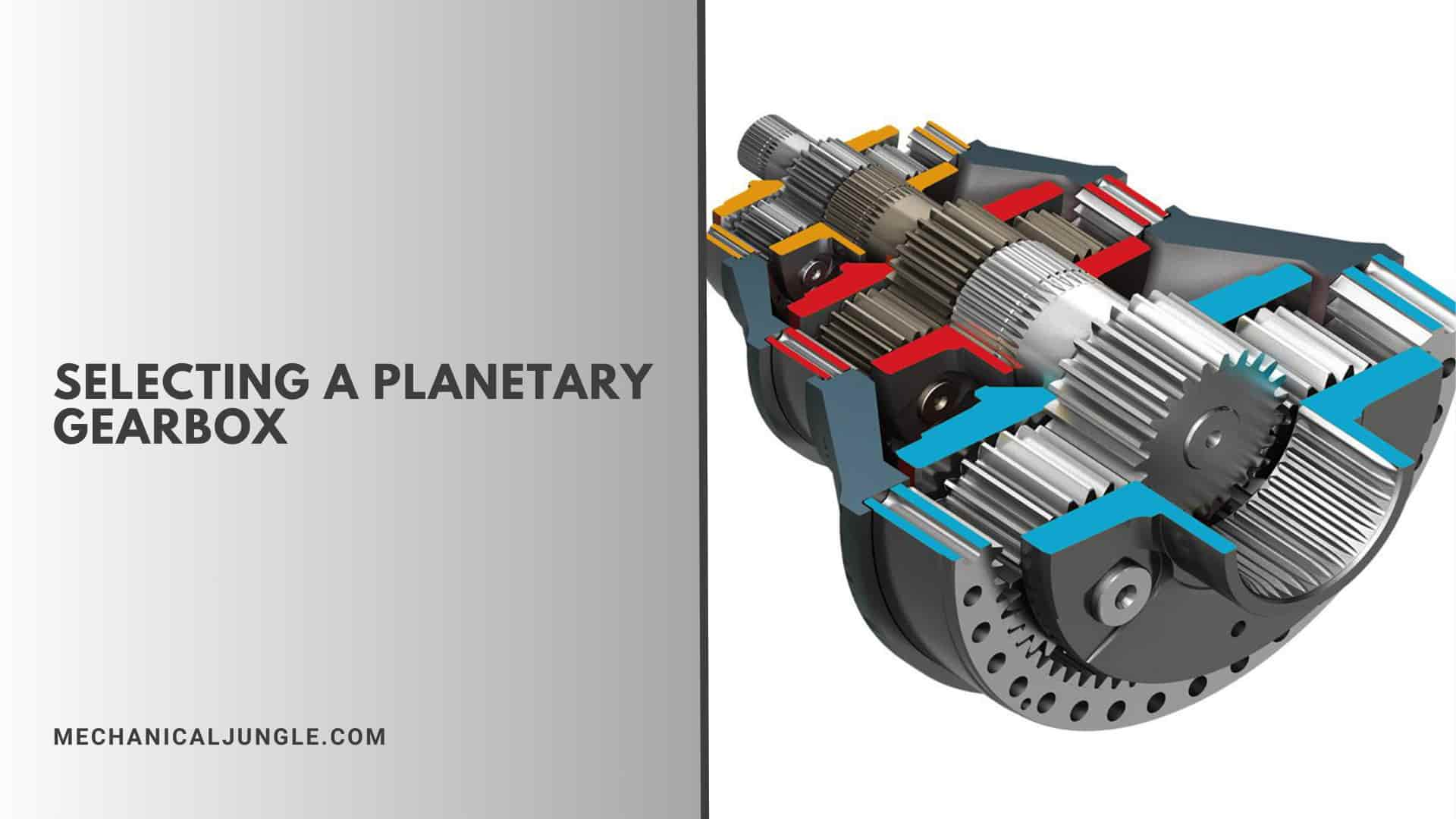
These are important to keep in mind when selecting a planetary gearbox for your application;
Required specifications – torque, reactance, ratio, etc. of the application must be taken into account.
Environment: – Some environments can leave a gearbox exposed to dust, dirt, or moisture, so it is important to consider this factor and choose the right safety gearbox.
Space: – Planetary gearboxes are available in a variety of sizes; smaller gearboxes can be used if limited space is available.
Types of Planetary Gearbox:
Three main types of planetary gearboxes are available based on their performance, including wheel drive, shaft output, & spindle output. Here’s what they are & how they perform.
#1. Wheel Drive
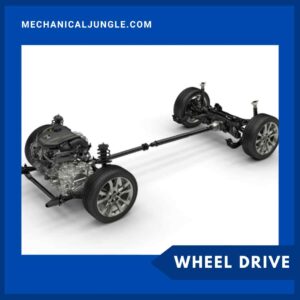
The sun gear drives the surrounding planetary parts, which are connected to a carrier in a wheel drive planetary gearbox. When the sun gear is performed, the planetary gears transmit to the outer ring gear.
Wheels can be attached to the housing of the system. By connecting the wheel directly to the gearbox, the size of the system can be customized. Wheel drive planetary gearboxes can be used in cases up to 332,000 N.m of torque.
#2. Shaft Output

The sun gear drives the surrounding planetary parts, which are housed in a turning carrier in a shaft drive gearbox. The ring portion is held stationary, with the turning carrier providing drive to the shaft.
The housing part of the system is connected directly to the machine, with the output turning shaft. The range of shaft output gearbox can give output up to 113,000 Nm.
#3. Spindle Output
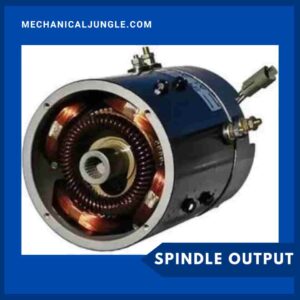
Spindle output planetary gearboxes perform in a similar way to shaft output, although the output is provided as a flange. Spindle drives planetary types can be used in an application with up to 113,000 Nm of torque.
What Are the Drawbacks of Using Planetary Gearbox?
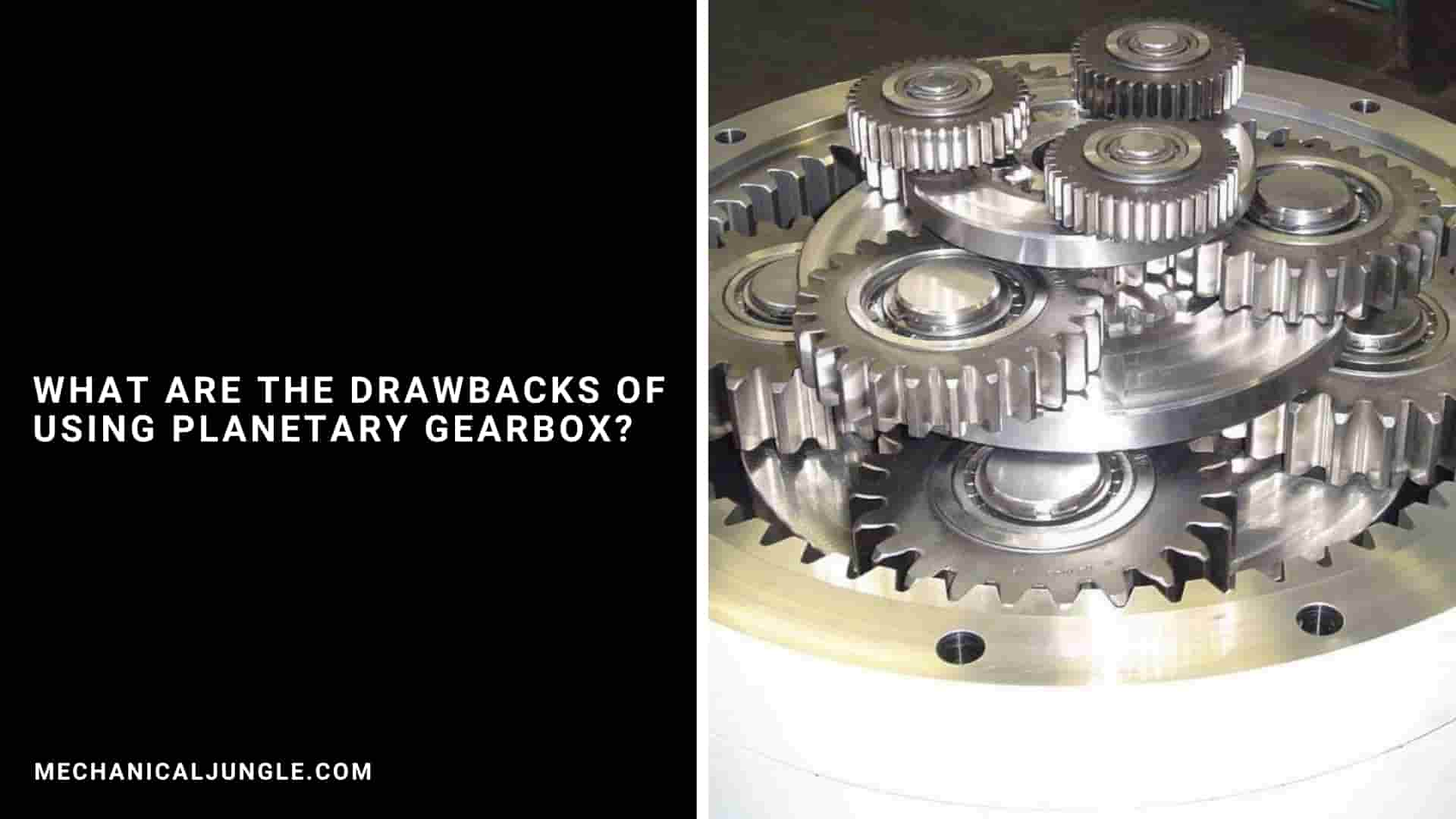
Planetary gearboxes have some drawbacks and disadvantages. Their complexity in modeling and production makes them a more expensive method than other gearbox forms. And precise manufacturing is of utmost importance for these devices.
If one planetary gear is placed closers to the sun gear than the other, there may be some imbalance in the planetary gears, leading to increased wear and failure.
In addition, the compact footprint of planetary gears results in high heat dissipation, so applications that perform at very high velocities or experience sustained performance may require cooling.
Once a “normal,” in other words, the inline planetary gearbox is employed, the motor and driving parts must conform to each other, although constructors offer right angle models that incorporate other gear sets that are supplied. There are always bevel gears with helical teeth to do.
The offset between the output and the input. Consider that planetary gearboxes can be made with either a spur gear or a helical gear.
Spur gears have zero helix angle; Therefore, they do not create any axial force. As a result, the bearings in a spur-type planetary gearbox serve only to provide the gear shaft. In contrast, helical types include a helix angle between 10 and 30 degrees, resulting in considerable axial forces.
Bearings employed in the helical form of planetary gearboxes must bear these axial forces. Larger helix angles cause greater axial force but also present higher torque capability, smoother operation, and less noise.
Spur Gear and Helical Gear in Planetary Gearbox Reference: Speed Control Tips Furthermore, in a planetary gearbox – whether it is a helical designs or spurs type – bearings play an essential role in the torque transmission aspect.
But the planetary configuration gives a limited gap in the gearbox for the inclusion of bearings. Needle bearings are a suitable choice from the aspect of size but are not manufactured to bear significant axial forces.
Tapered rollers bearings are more desirable for high axial force but are generally larger than needle bearings.
Basic limitations on bearing type and size, combined with the dual function of supporting an axial load and transmitting torque, mean that the torque level of a helical planetary gearbox may be smaller than that of similar gearboxes employing spur gears. , whose bearings only bear certain forces because of no axial force of torque transmission.
On the other hand, helical planetary models have an easier operation, lower noise, and higher rigidity than spur planetary types. These properties make helical planetary gearboxes a more common choice in servo applications.
Planetary Gearboxes from Heason:
Our planetary gearboxes come from our suppliers. Micron; we are a major distributor of their products within the UK. We have teams of experts to assist you with your selection and give you expert advice on which planetary gearbox would be best suited for your application.
We can supply a complete Micron Planetary Gearbox with a ready mount system to match your motor. We can also supply pre-assembled and tested gearboxes and motors.
Browse our full range of planetary gearboxes, with seven different types available, each suited to different conditions and applications. Please contacts us for more information about our planetary gearboxes or to discuss your application.
FAQ
What Is a Planetary Gearbox?
A planetary gearbox is a type of gearbox where the input and output shafts are aligned, and torque is transferred through a central sun gear, multiple planetary gears, and an outer ring gear. This design allows for high torque density and compact size.
Why Is It Called a Planetary Gearbox?
The name “planetary gearbox” comes from the arrangement of the gears, which resembles the solar system. The central sun gear is analogous to the sun, while the surrounding planetary gears and the outer ring gear represent planets orbiting around it.
How Does a Planetary Gearbox Work?
In a planetary gearbox, the input power is applied to the sun gear. The planetary gears orbit around the sun gear and mesh with the ring gear. The carrier, which holds the planetary gears, rotates and transmits the output power. This configuration allows for different speed and torque ratios.
What Are the Types of Planetary Gearboxes?
There are three main types:
- Wheel Drive: Sun gear drives planetary gears which transmit power to an outer ring gear. Useful in applications with high torque.
- Shaft Output: Sun gear drives planetary gears housed in a turning carrier, providing output through a shaft.
- Spindle Output: Similar to shaft output, but the output is provided through a flange.
What Are the Advantages of Planetary Gearboxes?
Planetary gearboxes offer high torque density, compact size, and durability with fewer maintenance needs. They also provide smooth and efficient power transmission.
What Are the Drawbacks of Planetary Gearboxes?
Drawbacks include high manufacturing complexity and cost, potential imbalance if gears are not properly aligned, and high heat dissipation in high-speed applications. Additionally, they may require cooling in sustained performance conditions.
How Do I Select the Right Planetary Gearbox for My Application?
Consider the required specifications such as torque, ratio, and environment. Also, account for space limitations and the specific performance needs of your application.
What Is the Difference Between Spur and Helical Planetary Gears?
Spur gears have zero helix angle, resulting in no axial forces but potentially higher noise. Helical gears have a helix angle, leading to axial forces but providing smoother operation and higher torque capacity.
What Bearings Are Used in Planetary Gearboxes?
Bearings in planetary gearboxes can be needle bearings for compactness or tapered roller bearings for handling axial forces. The choice depends on the gear type (spur or helical) and the application requirements.
Where Can I Find Planetary Gearboxes?
Planetary gearboxes can be sourced from specialized suppliers like Micron. They offer a range of options suited to different conditions and applications, and distributors can provide expert advice and support for selection.


